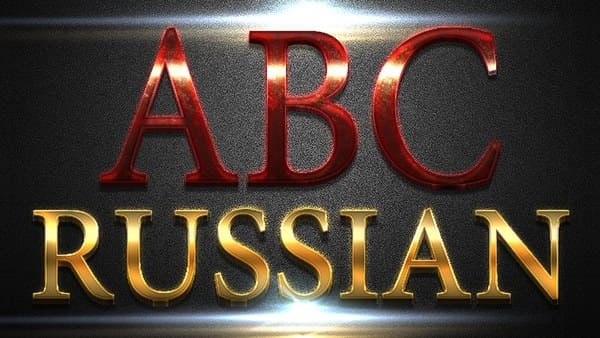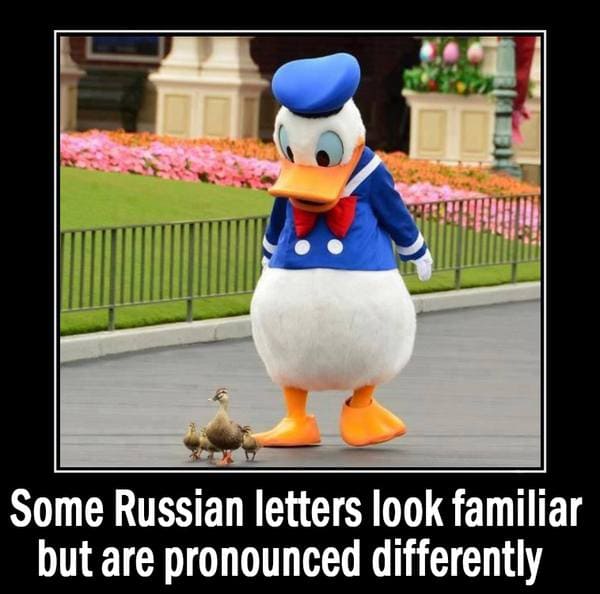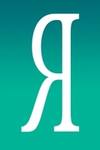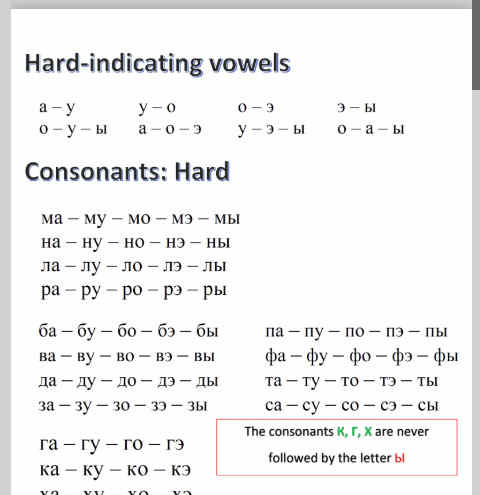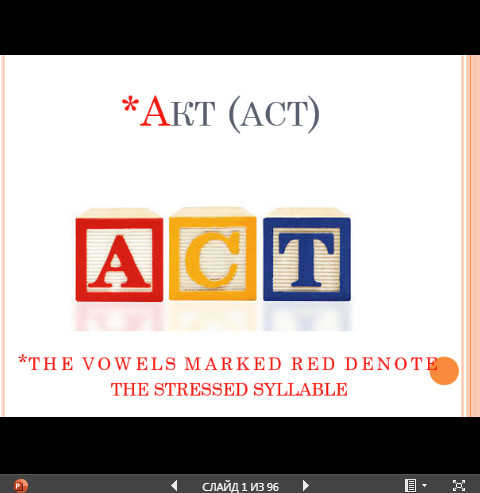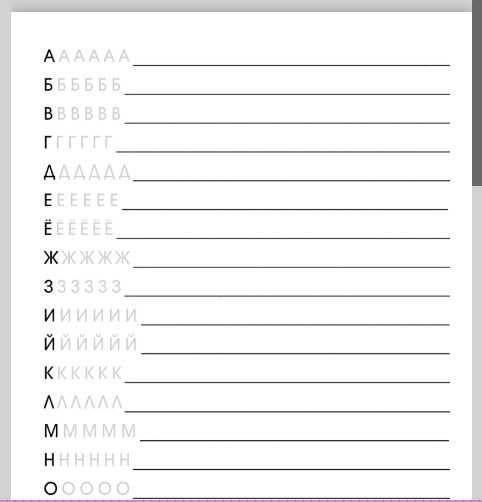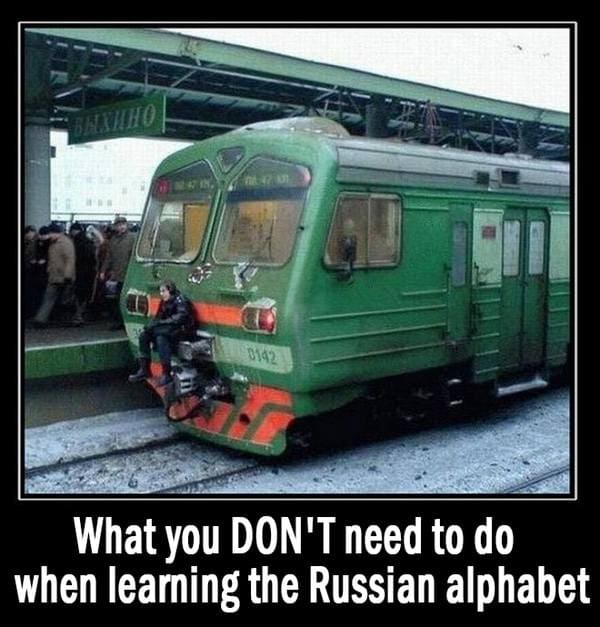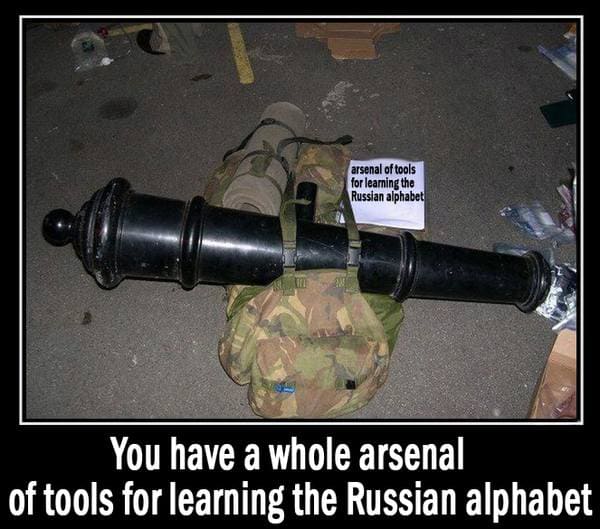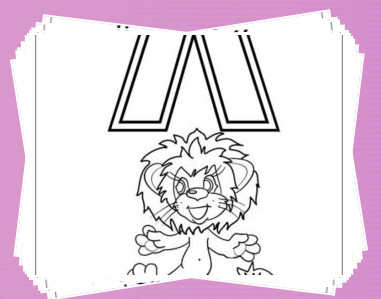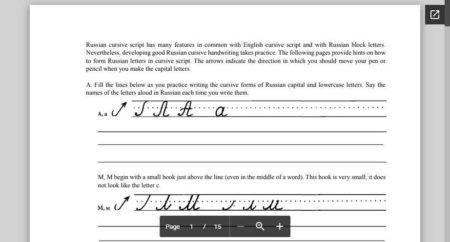The Russian Language Alphabet: Written Cyrillic Script Characters With Pronunciation
Learning Russian is certainly challenging for many foreigners, but the alphabet isn’t the tricky thing. Unfamiliar script just makes it look difficult, but as soon as one gets familiar with it, the task becomes so much easier.
So, what is the Russian alphabet called? I bet you heard the word ‘Cyrillic’ at some point. The thing is that the Cyrillic script, or “azbuka”, is at the heart of many alphabets (including Russian) and comes from the name of St Cyril. But let’s leave the origin of the Russian alphabet aside for a moment and move to the most interesting part – Russian letters.
Russian Letters
How many characters are there in the Russian alphabet?
The Russian Cyrillic alphabet consists of 33 letters, which is a bit more than the familiar Latin A to Z, which has only 26. Quite a few Russian letters are already familiar, and they are even pronounced similarly:
These letters look the same and have similar pronunciation.
At the same time there are letters which look familiar, but are pronounced absolutely differently. Take a look at the following:
As an example, look at the Russian word “ВОР”. It looks familiar, and one might even be sure that it’s ‘bop’, while it actually reads “vor” and means “thief”. This is the challenging part of learning the alphabet, because you subconsciously associate these letters with those of your language, and the links are often misleading.
The last group includes letters that are probably just gibberish to most of you:
However, don’t be scared. The letters look differently, but the sounds designated by them are almost the same:
Full Russian Alphabet Chart With Pronunciation
Letters (Symbols) List
Russian letter | English equivalent | Russian letter | English equivalent | |||
|---|---|---|---|---|---|---|
| А а | a as in “father” | П п | p as in “span” | |||
| Б б | b as in “but” | Р р | similar to r in “run” (but trilled) | |||
| В в | v as in “victory” | С с | s as in “son” | |||
| Г г | g as in “good” | Т т | t as in “top” | |||
| Д д | d as in “day” | У у | oo as in “moon” | |||
| Е е | ye [=ЙЭ] as in “yes” | Ф ф | f as in “fan” | |||
| Ё ё | yo [=ЙО] as in “your” | Х х | similar to h in “hello” (but “thicker”, more intense) | |||
| Ж ж | zh as in “Zhivago” (also: s as in “treasure”) | Ц ц | ts as in “its” (also: zz as in “pizza”) | |||
| З з | z as in “zoo” or “zodiac” | Ч ч | ch as in “chip” | |||
| И и | ee as in “meet” | Ш ш | sh as in “shell” | |||
| Й й | y as in “toy”, “boy” | Щ щ | also sh as in “fresh sherbet”. Try to smile broadly and pronounce “she” | |||
| К к | k as in “like” | ъ | hard sign (no separate sound) | |||
| Л л | l as in “look” | ы | The closest sound is i as in “it” or “bit”. To get the Russian ы sound, pronounce “it” but pull your tongue back from your lower teeth and towards your throat. Keep your tongue low. We explain in more detail how to pronounce this sound in our lessons | |||
| М м | m as in “mom” | ь | soft sign (no separate sound) | |||
| Н н | n as in “no” | Э э | e as in “edit” | |||
| О о | o as in “born” | Ю ю | yu [=ЙУ] as in “Yuma” | |||
| Я я | ya [=ЙА] as in “yard” |
Russian letter | English equivalent | |
|---|---|---|
| А а | a as in “father” | |
| Б б | b as in “but” | |
| В в | v as in “victory” | |
| Г г | g as in “good” | |
| Д д | d as in “day” | |
| Е е | ye [=ЙЭ] as in “yes” | |
| Ё ё | yo [=ЙО] as in “your” | |
| Ж ж | zh as in “Zhivago” (also: s as in “treasure”) | |
| З з | z as in “zoo” or “zodiac” | |
| И и | ee as in “meet” | |
| Й й | y as in “toy”, “boy” | |
| К к | k as in “like” | |
| Л л | l as in “look” | |
| М м | m as in “mom” | |
| Н н | n as in “no” | |
| О о | o as in “born” | |
| П п | p as in “span” | |
| Р р | similar to r in “run” (but trilled) | |
| С с | s as in “son” | |
| Т т | t as in “top” | |
| У у | oo as in “moon” | |
| Ф ф | f as in “fan” | |
| Х х | similar to h in “hello” (but “thicker”, more intense) | |
| Ц ц | ts as in “its” (also: zz as in “pizza”) | |
| Ч ч | ch as in “chip” | |
| Ш ш | sh as in “shell” | |
| Щ щ | also sh as in “fresh sherbet”. Try to smile broadly and pronounce “she” | |
| ъ | hard sign (no separate sound) | |
| ы | The closest sound is i as in “it” or “bit”. To get the Russian ы sound, pronounce “it” but pull your tongue back from your lower teeth and towards your throat. Keep your tongue low. We explain in more detail how to pronounce this sound in our lessons | |
| ь | soft sign (no separate sound) | |
| Э э | e as in “edit” | |
| Ю ю | yu [=ЙУ] as in “Yuma” | |
| Я я | ya [=ЙА] as in “yard” |
As you can see, all the letters in the Russian alphabet can be divided into:
- consonants 21 (marked green in the table above)
- vowels 10 (marked red in the table above)
- signs 2
Many people use various associative learning techniques to memorize the pronunciation of Russian letters. Maybe you can give me some tips? For example, how would you memorize the 5th letter of the Russian alphabet Д, which stands for the Latin D? Or, how would you remember what У means in Russian?
Now that you know which sound each letter makes, it’s time to start reading words in Russian.
Russian Alphabet and Letter Pronunciation Guide
You might think it sounds strange, but mastering a perfect Russian accent should never be your priority, not even at the higher levels of learning. Your goal is to make sure native speakers understand your spoken Russian and they understand exactly what you mean. You can complete this task without trying to pass for a Russian. Moreover, if you think about it, your foreign accent is your biggest friend in a Russian-speaking environment. Why so? Because when people hear your accent, they immediately know you’re a foreigner and adapt to your vocabulary and speech speed, which makes communication much easier for you. If you sound like a native, you will be treated like a native. That may not be exactly what you want at the beginning.
So, to cover our main task of understanding and being understood, let’s look at a few rules concerning pronunciation that you should learn and use
Russian Pronunciation Rules
The consonant Й and the vowel И are completely different sounds
Compare:май (May)
мои (my – plural) нет историй (there are no stories) нет истории (there is no story)Moreover, the consonant Й can be “hidden” in (can be part of) a few vowel letters (Е, Ё, Ю, Я).
Look here for more information:TABLE OF READING RULES OF Е, Ё, Ю, Я|icon|
Hard and soft consonants
In Russian almost every consonant comes in two “modes”: hard and soft. This distinction is very important, since the ‘hardness’ or the ‘softness’ of a particular consonant can change the meaning of the word completely. Compare:
- мат (gymnastic pad) мать (mother)
- нос (nose) нёс (he carried)
- стал (he became) сталь (steel)
Quick tip: to pronounce a consonant softly, press the middle of your tongue against your alveolar ridge and hold it there. The tip of your tongue will then be somewhere near your lower teeth (most likely touching them). This position is key for the pronunciation of the Russian soft consonants (the tongue is forward and arched toward your palate). Pressing the middle of your tongue closely to your alveolar ridge, try to pronounce the following consonants. You will notice they will sound differently, and that is what is called soft consonants.
Russian Hard and Soft Consonants Table
Consonant letter | Hard consonant sound example (transcription and audio) | Soft consonant sound example (transcription and audio) |
|---|---|---|
| М | [М] | [М'] |
| Н | [Н] | [Н'] |
| Л | [Л] | [Л'] |
| Р | [Р] | [Р'] |
| Б | [Б] | [Б'] |
| П | [П] | [П'] |
| В | [В] | [В'] |
| Ф | [Ф] | [Ф'] |
| Д | [Д] | [Д'] |
| Т | [Т] | [Т'] |
| З | [З] | [З'] |
| С | [С] | [С'] |
| Г | [Г] | [Г'] |
| К | [К] | [К'] |
| Х | [Х] | [Х'] |
| Ш | [Ш] | No soft counterpart |
| Ж | [Ж] | No soft counterpart |
| Ц | [Ц] | No soft counterpart |
| Ч | No hard counterpart | [Ч'] |
| Щ | No hard counterpart | [Щ'] |
| Й | No hard counterpart | [Й'] |
Consonant letter | Hard consonant sound example (transcription and audio) | Soft consonant sound example (transcription and audio) |
|---|---|---|
| М | [М] | [М'] |
| Н | [Н] | [Н'] |
| Л | [Л] | [Л'] |
| Р | [Р] | [Р'] |
| Б | [Б] | [Б'] |
| П | [П] | [П'] |
| В | [В] | [В'] |
| Ф | [Ф] | [Ф'] |
| Д | [Д] | [Д'] |
| Т | [Т] | [Т'] |
| З | [З] | [З'] |
| С | [С] | [С'] |
| Г | [Г] | [Г'] |
| К | [К] | [К'] |
| Х | [Х] | [Х'] |
| Ш | [Ш] | No soft counterpart |
| Ж | [Ж] | No soft counterpart |
| Ц | [Ц] | No soft counterpart |
| Ч | No soft counterpart | [Ч'] |
| Щ | No soft counterpart | [Щ'] |
| Й | No soft counterpart | [Й'] |
If this way of articulation seems uncomfortable for you, don’t worry. The most important thing here is to make your tongue get used to this position. Further exercises will finish the job.

Hard-indicating and soft-indicating vowels
The hardness or the softness of a particular consonant is indicated in writing by the following vowel letter or the soft sign (ь). The consonant letter itself doesn’t reflect the hardness or the softness of the corresponding consonant sound. Since there are two “modes” of each consonant, there should be two sets of vowels: one for the “hard mode” and one for the “soft mode”.
Russian Hard-Indicating and Soft-Indicating Vowels Table
Hard-indicating vowels (letters, transcription and audio) | Soft-indicating vowels (letters, transcription and audio) |
|---|---|
| А а [А] | Я я [=ЙА] |
| О о [О] | Ё ё [=ЙО] |
| У у [У] | Ю ю [=ЙУ] |
| Э э [Э] | Е е [=ЙЭ] |
| ы | И и |
Hard-indicating vowels (letters, transcription and audio) | Soft-indicating vowels (letters, transcription and audio) |
|---|---|
| А а [А] | Я я [=ЙА] |
| О о [О] | Ё ё [=ЙО] |
| У у [У] | Ю ю [=ЙУ] |
| Э э [Э] | Е е [=ЙЭ] |
| ы | И и |
In the following words below Е, Ё, Ю, Я are read as in the alphabet (i.e. including their “hidden” Й component) | After a consonant the letters Е, Ё, Ю, Я lose their Й component and only denote the softness of the preceding consonant | |||
|---|---|---|---|---|
| at the beginning of the word | на [на] – ня [н’а] | |||
| ёжик [йожик] = hedgehog | то [то] – тё [т’о] | |||
| Европа [йэвропа] = Europe | пэ [пэ] – пе [п’э] | |||
| яхта [йахта] = yacht | су [су] – сю [с’у] | |||
| юбилей [йуб’ил’эй] = jubilee, anniversary | ||||
| after Ь or Ъ | ||||
| семья [сем’йа] = family | ||||
| объект [обйэкт] = object | ||||
| after another vowel | ||||
| июль [ийул’] = July | ||||
| маяк [майак] = lighthouse |
In the following words below Е, Ё, Ю, Я are read as in the alphabet (i.e. including their “hidden” Й component) | |
|---|---|
| at the beginning of the word | |
| ёжик [йожик] = hedgehog | |
| Европа [йэвропа] = Europe | |
| яхта [йахта] = yacht | |
| юбилей [йуб’ил’эй] = jubilee, anniversary | |
| after Ь or Ъ | |
| семья [сем’йа] = family | |
| объект [обйэкт] = object | |
| after another vowel | |
| июль [ийул’] = July | |
| маяк [майак] = lighthouse | |
After a consonant the letters Е, Ё, Ю, Я lose their Й component and only denote the softness of the preceding consonant | |
| на [на] – ня [н’а] | |
| то [то] – тё [т’о] | |
| пэ [пэ] – пе [п’э] | |
| су [су] – сю [с’у] | |
Other reading and pronunciation rules (including the pronunciation of stressed and unstressed vowels О, Е, Я) will be covered in their own article.
Russian Writing
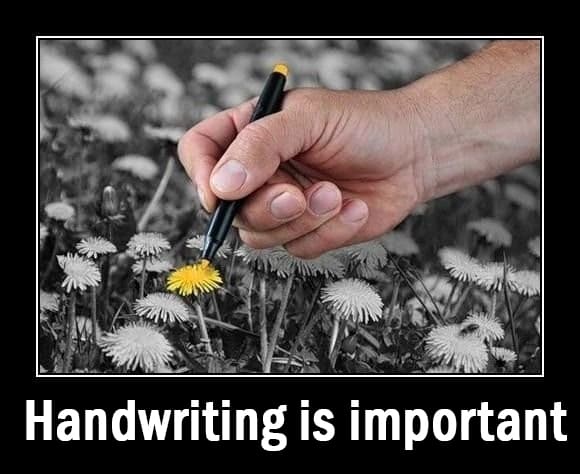
Here is a useful app that will help you practice Russian letter tracing
(https://itunes.apple.com/us/app/learn-russian-alphabet-writing-russian-cursive/id624085655?mt=8)
What you need to do when starting learning the Russian alphabet
- You need to actually learn Russian letters. No, you can’t avoid it. Even if you don’t need to write Russian. Russians almost never use non-Cyrillic symbols. At some point you will still have to learn Cyrillic, and it is better to do it at the very beginning.
- It is better to learn the Russian alphabet with handwriting, not typing.
What you DO NOT need to do when starting learning the Russian alphabet
- You don’t need to memorize the Russian letter names.
What you need instead is the SOUNDS the letters make. - At the very beginning you don’t need to learn the Russian cursive font.
You are not going to participate in a Russian calligraphy contest. First, you should become familiar with Russian block letters and learn to write them. You can even use the letters upper case instead of the lower case at your first steps. As long as you do it in handwriting, it is efficient. - You don’t need the Russian IPA chart.
When learning English as a foreign language, students can’t avoid using the International Phonetic Alphabet because the difference between spelling and pronunciation in English can be so large that, as they say, one can read “Manchester” as “Liverpool”. Let me remind you that Russian is a more phonetic language than English. It means that the spelling of a Russian word pretty much agrees with its pronunciation, so you don’t need an additional system of letters transcription (IPA) to help you learn to read Russian. Just learn what sound each letter makes, and you’re good to go!
St Cyril and Methodius – the Inventors of the Cyrillic Script
The history of the Cyrillic script starts in the 9th century in the Bulgarian Empire. There is a point of view in historical literature that brothers Cyril and Methodius were the founders of the Cyrillic script. According to these sources, the saint brothers were summoned to put in order the segmentary parts of the Slavic writing and sound system and create a unified script for Old Church Slavonic.
There are reasons to believe that the oldest alphabet created by saints Cyril and Methodius (“glagolitsa”) included 156 characters (“glagolitsa” is derived from “glagolity” which is the archaic word for “to say”). However, later on the number of letters was cut down to 41, which was done for the purposes of easier acquisition of the alphabet. Some people, however, believe that this cut down was an act of sabotage on the part of those who didn’t want the Slavs to have a rich writing system.
There is also a common point of view that Cyril and Methodius were not the ones who developed the Cyrillic script. The saints were the authors of the above mentioned Glagolitic script (“glagolitsa”), which was used later by their disciples to create Cyrillic. The early Cyrillic alphabet was comprised of Glagolitic and Greek elements and was brought more in line with Latin for the sake of simplicity of letter strokes. However, there were fewer digraphs in Cyrillic than in Latin. For the most part, one letter denoted one sound – the principle that is preserved in the modern Russian language. It was done for the purposes of the early used Old Church Slavonic.
Since the early days Cyrillic in Russia has gone through a lot of changes. A lot of them were carried out during the reign of Peter the Great. The Russian tsar “Latinized” the Russian Cyrillic alphabet eliminating a number of letter elements and making the Russian letters look more similar to Latin letters. Thus, he introduced the letter “Я”, which is a mirror reflection of the English “R”.
Nevertheless, the Russian Cyrillic alphabet still includes a lot of letters that cannot be found in other alphabets. Some of them, such as Й, were introduced only in the 18th century. The letter Ё was also added to the alphabet in the 18th century by a famous Russian writer Nikolay Karamzin.
A few common words containing the letter Ё:
- Ёлка = fir tree
- Ёжик = hedgehog
- Всё = everything
- Вперёд = forward
An interesting fact about the letter Ё: it is always accented in a word, so whenever you see a word containing Ё, you can pronounce it correctly from the first try! The sad thing, though, is that nowadays in many Russian texts Ё is written without the dots, so it may confuse you a bit. But don’t worry, as you progress in Russian, it will be easier for you to recognize the words with Ё even when the dots are lost.
In 1919 the efforts to “Latinize” the Russian alphabet extended to an absurd initiative to completely replace the Cyrillic script with the Latin script. Fortunately, this initiative didn’t receive much support, and the reform wasn’t carried out.
Nowadays the Cyrillic script is used in many countries besides Russia:
- Ukraine
- Bulgaria
- Serbia
- Macedonia
- Belarus
- Montenegro
- Kazakhstan
- Kyrgyzstan
- Tajikistan
- Mongolia
A note for those who want to learn the Russian cursive: the English word “cursive” and its Russian calque “курсив” [koor-SIV]
actually mean different things. The English “cursive” implies handwriting, whereas the Russian “курсив” [koor-SIV] refers to the Italics font. Though the Russian hand-written and Italics fonts look very similar, there are still a few differences, for example, in the letter “Д”.Russian alphabet learning tools
There are lots of tools that can help you memorize the Russian letters and learn to write them. The Internet is full of audio, video and other interactive learning tools. Below are just a few of them:
- Russian alphabet posters, images, pictures will help you visualize the letters.
When choosing such a tool, make sure each letter is accompanied by the sound it makes and not by its official name in the alphabet. As I said before, to learn to read Russian, you don’t need the names of the letters, but rather their corresponding sounds. One tip: if you want to actually buy a Russian “azbuka / bukvar” (ABC book), choose the one that was specifically designed for those who learn Russian as a foreign language and not the one created for children whose native language is Russian. In the ABC book designed for foreign learners you will find explanations about the sounds each letter makes, approximate English equivalents and maybe even a CD disk with audio. - Russian alphabet songs.
If you can’t live not knowing the names of Russian letters and their order, catchy alphabet letters songs are a wonderful tool to help you learn this. For example, this alphabet train song:If you want to learn some words along with learning the letters, you can use YouTube songs created for Russian toddlers, like this one:
To hear the words more clearly, you can slow it down a little by clicking on the settings icon at the bottom right corner of the video and then changing the speed settings from normal to 0.75. By the way, you can thus slow down any other video in Russian to practice your listening skills. Russian ABC string songs are a great tool for kids learning Russian and they are equally engaging for adults. - Russian alphabet quizzes and tests.
Pictures and songs are a good tool of representation of the alphabet. After this you should do some tasks to make it sink in. In other words, you need to practice recognizing the letters and correlating them with the proper sounds. Russian alphabet tests, quizzes and other interactive activities will help you memorize through self-assessment. The most efficient tests and quizzes are those that use a complex approach to creating the tasks (multiple choice, True or False, single answer, multiple answer, sequence, pairing, long answer, short answer, scales) [THIS PAGE WILL BE AVAILABLE SOON]. - Russian alphabet flashcards.
The lovers of 5-minute everyday learning will find them very useful. Very often it’s not just text but also a picture. Some teachers go further than that and create mnemonic flashcards containing a mnemonic picture or an English word that helps you memorize the Russian word through association. You can buy such flashcards here: https://www.etsy.com/listing/478321068/russkij-alfavit-kirillica-kartoki or use free online flashcards.[THIS PAGE WILL BE AVAILABLE SOON]. - Russian alphabet blocks.
If you want something tangible for your little kids to learn Russian, you can buy Russian alphabet blocks. You can teach your kids the Russian alphabet starting from the age of 3. Earlier learning won’t speed up the process. More about it here: [THIS PAGE WILL BE AVAILABLE SOON]. - Google translate (https://translate.google.com/#auto/ru/Russian%20alphabet).
People memorize things better when they read them AND hear at the same time. Using Google translate is a great technique, because you can type in a word and click the little speaker button — you will hear the pronunciation instantly. You’ll remember the word and know what it sounds like. You may also like the forvo (https://forvo.com/) service, which is another great tool for language learners. You can work with random words, which you can also listen to.
All these tools are perfect for self-study and will help you learn the Russian alphabet fast enough. However, if you are a saver about your time, you can choose to spend just 2-3 hours with a native tutor and start reading Russian almost perfectly after that. The alphabet is like a door through which you enter the marvelous world of the Russian language.
To take you to the next step, let me help you identify your learning style:
Russian alphabet for kids
When teaching the Russian alphabet to children you should stick to the following principles:
- Touch with reality.
The letters of the alphabet are abstract signs, and children are not very good at abstract thinking. Their thinking is more imagery, so the learning of the alphabet should be connected for them with familiar images. If your child is bilingual and already knows some Russian words, these words and the sounds in them can become links to the corresponding letters. With bilingual kids you can use Russian bukvars / azbukas as well as poems. If your family is unilingual, find appropriate images in your child’s native language. For example, the Russian letter ‘Ж’ makes the same sound as ‘S’ in ‘treasure’, so go on a search for this ‘treaЖure’ together with your child. - Game is the best teacher.
Children love to play. They also love to compete. So, all kinds of games and competitions are a great tool for them in learning the Russian alphabet. If your child’s eyes are sparkling, it is the best sign for you that the game is working and the learning material is sinking in. - Repetition.
Since letters are still abstract signs and your kid has to learn two sets of them (English and Russian), there can’t be too much review and repetition. Try to review the Russian ABC with your kid every day until you’re sure it’s firmly there. You can even practice during lunch time! Just give your child Russian alphabet soup or buy Russian alphabet magnets for your fridge and play making easy words, syllables and phrases while cooking dinner.
Type in Russian

How to type Russian letters (Russian keyboards)
Depending on your preferences, you can either buy an actual Cyrillic script keyboard or use one of the virtual options.
What you can buy:
- USB-keyboard with Russian letters. This is the easiest way to start typing in Russian. Just plug the keyboard into your computer and add the Russian language in the control panel – time and language settings of your computer. Pick the necessary language and click “Add”. You can also set up the hotkey combination for fast and simple switching between languages. Buy the USB-keyboard on Amazon.
- Russian keyboard stickers (transparent). These are cheaper, and you won’t have to give up the keyboard you’re used to. Buy the stickers on Amazon.
If you are not so sure you want to buy a keyboard, you can use one of the following free virtual options.
Free Russian virtual keyboards (you can easily add them to your computer and change the keyboard to Russian):
- Software that can be installed to Windows 7,8,10 and Mac. Download Russian virtual keyboard [605.15 KB]
, install it to your computer and use it whenever you want. Or, download this portable version
that doesn’t require installation but will open its designer’s web-page every time you start it. There are also paid options like this one which can be fully integrated to your computer and are very user-friendly. - Online services like this one https://winrus.com/keyboard.htm You can type any Russian text there and then copy paste it to a messenger or another place where you might need it.
- Google Chrome extensions. They will allow you to create texts in Russian in your Chrome browser. With them you are able to use your QWERTY keyboard to type and not just slowly click on the letters with your mouse. This full-screen keyboard will appear each time you click on a text box. You can also make it appear on demand. This one allows you to set up the Russian language by default. Finally, this one offers other languages besides Russian and allows you to quickly search for a word you just typed in various search engines.
- The following option will allow you to practice touch typing in Russian: https://www.keybr.com/practice
- Cyrillic alphabet converter (homophonic keyboard). With this keyboard you can easily type Russian with English letters. For example, to get «Привет», just start typing ‘Privet’ on your English keyboard, and the program will transliterate it for you. You can download this keyboard from the AATSEEL website and easily convert English to Russian letters. Similar online version: https://russian.typeit.org/ The same way you can transliterate Cyrillic to Latin with this online Russian converter https://www.lexilogos.com/keyboard/russian_conversion.htm
Good news! The Russian alphabet does not use special characters, so you don’t have to learn or type them.
Useful links
- Russian cursive font generator. Although there is no need in learning how to handwrite cursive in Russian (at least at the beginner’s level), you can still benefit from this fine font and send your Russian friend (or girlfriend) a beautifully written letter using this link (https://www.1001fonts.com/calligraphy+cursive+cyrillic-fonts.html ). You can choose the Russian alphabet cursive font that you like, download and install it to your computer and then type something using Word or another text editor.
- For those of you who absolutely love cursive or who are already proficient at writing Russian and want to write faster, there is a Russian cursive practice sheet.
Russian cursive practice sheet download free
- Beginners might find these useful.[THIS PAGE WILL BE AVAILABLE SOON].
- You can use this aggregator of different online translators to translate a text from Russian into English and from English into Russian. Other languages are also supported.
- Finally, here is the Russian Braille alphabet.
How long does it take to learn the Cyrillic script?
As I said before, it takes just a couple of hours with a teacher (may be a bit longer on your own) to get acquainted with the alphabet and to practice it.
Don’t put it off till tomorrow, start learning Russian today!
